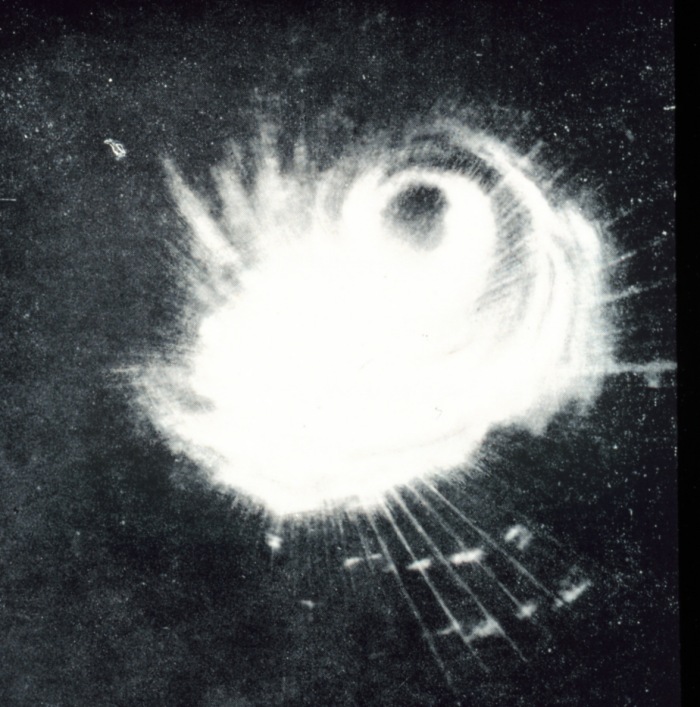
On December 17, 1944, the U.S. Navy’s Third Fleet, engaged in refueling operations 300 miles (500 km) east of the Philippines, blundered into the teeth of a deadly typhoon. Although he was aware of the storm in his vicinity, Admiral William “Bull” Halsey thought the storm would pass to his east and ordered his fleet to hold course and continue refueling. One of the ships in the vanguard picked up the approaching storm on radar, but since the technology was new no one knew how to interpret the image. As the fleet traveled further into the storm, aircraft on combat air patrols were unable to land due to adverse winds and were forced to ditch into the ocean. Luckily, all the pilots were rescued by destroyers. Eventually the storm winds exceeded 100 knots (185 km/hr) and three destroyers, the Spence, Hull, and Monaghan, capsized and sank in the high seas. Nine other ships were substantially damaged and over 100 aircraft were lost. 790 men were killed in the typhoon, but 93 sailors were rescued from the sea.
The Navy’s Fleet Weather Center in Pearl Harbor had analyzed the sparse data in the area to show the typhoon much further east than it was and forecast it to move northward, avoiding the Fleet. However, the US Army Air Force forecast center on Saipan sent a reconnaissance flight and found the storm heading toward Halsey and with estimated winds of 140 knots (260 km/hr). Capt. Reid Bryson tele-typed the observations to Pearl Harbor, but the Navy forecasters didn’t believe him and did not forward the information to the Third Fleet. Halsey’s chief aerologist, Cmd. George Kosco, who would later dub the storm “Cobra”, also believed the typhoon was closer than Pearl Harbor was depicting but still thought their southeastern course would avoid the worst of the storm. An inquiry was held later and found that Adm. Halsey had been in error in keeping the fleet on course, but did not recommend any substantial punishment. Six month’s later, Halsey would again sail the Third Fleet into another such storm, Typhoon Connie east of Okinawa, again causing significant damage to the ships.
- Reid A. Bryson, (2000) “Typhoon Forecasting, 1944, or, The Making of a Cynic”, BAMS, Vol. 81, No. 10, p. 2393-2397
- Hans Christian Adamson and George F. Kosco, (1967), “Halsey’s Typhoons”, Crown Publishers, New York, pp. 206